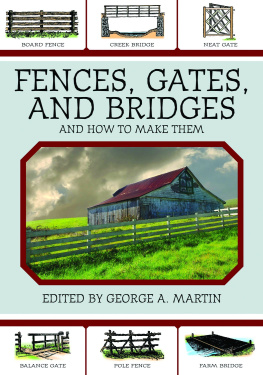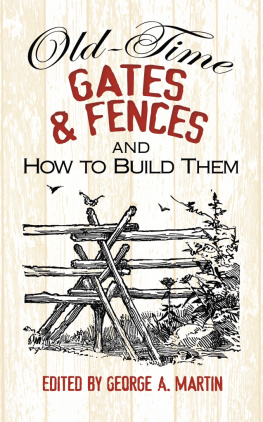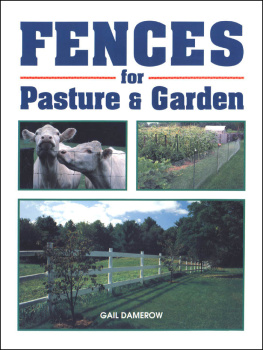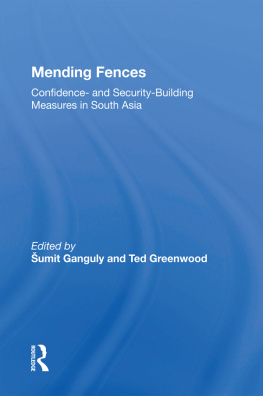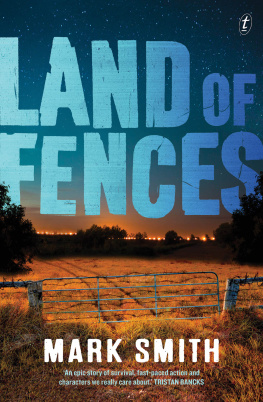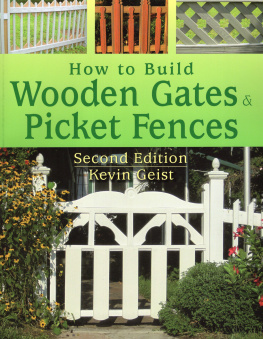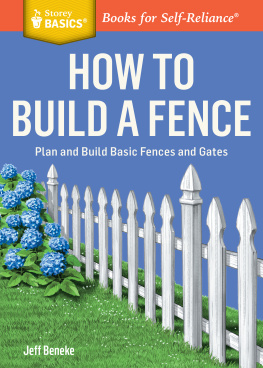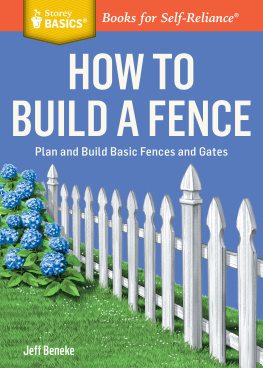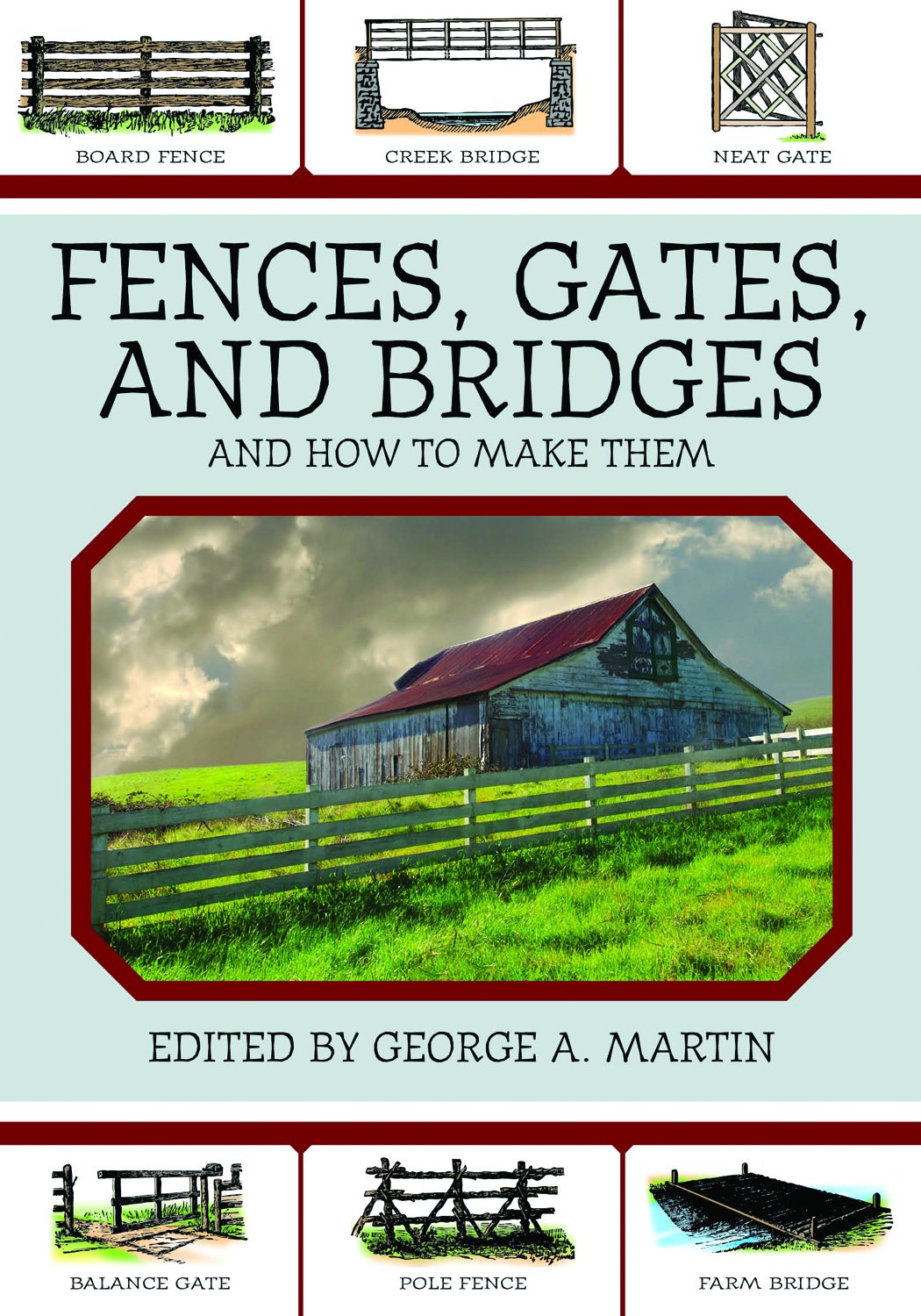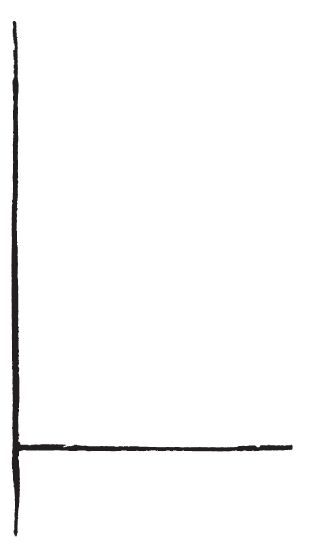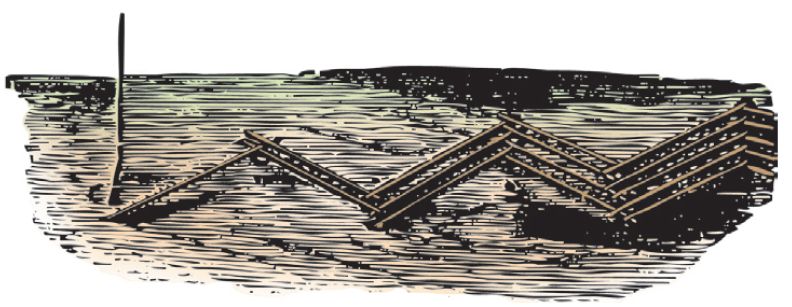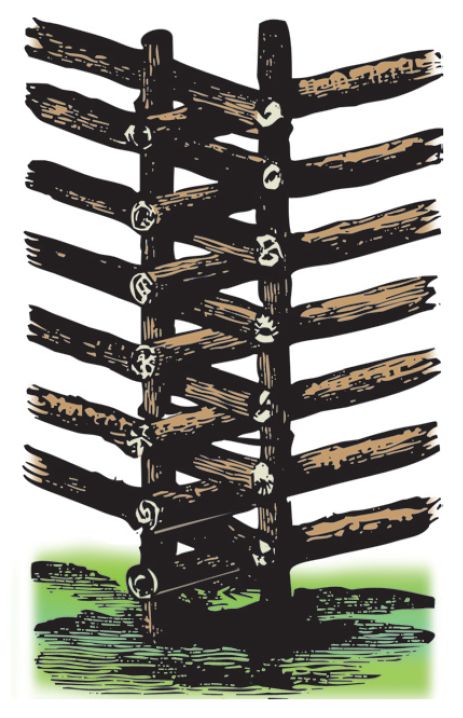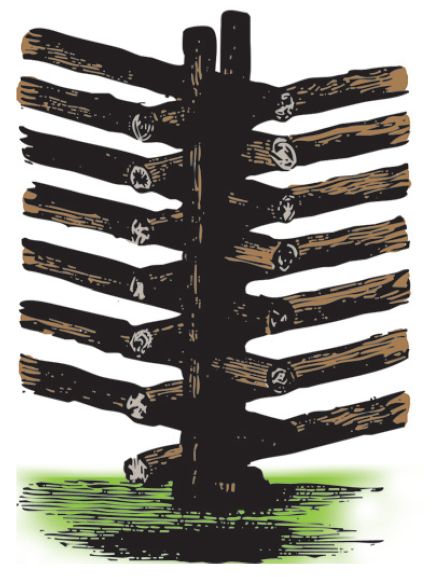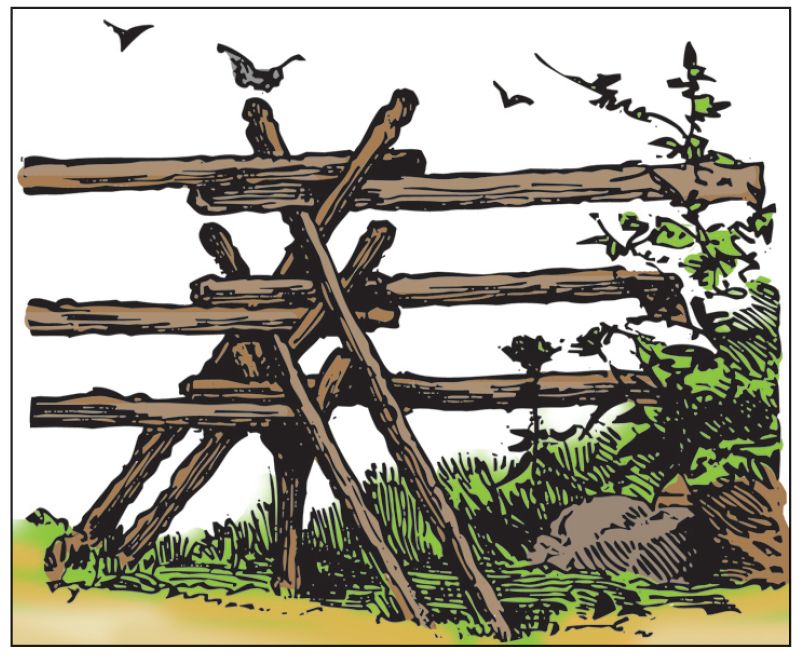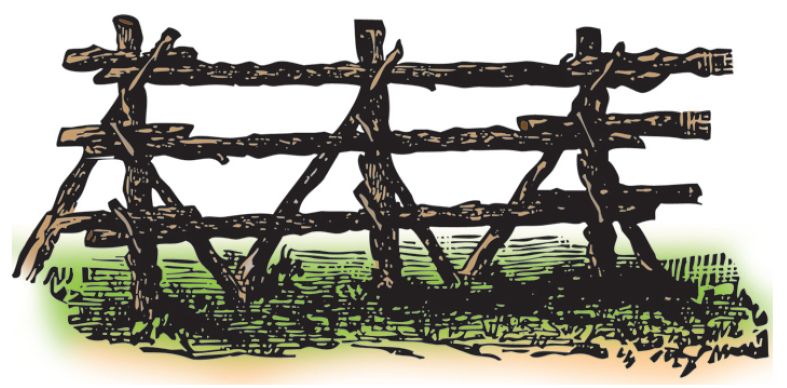CHAPTER I.
RAIL AND OTHER PRIMITIVE WOOD FENCES.
VIRGINIA RAIL FENCE.
The zigzag rail fence was almost universally adopted by the settlers in the heavily timbered portions of the country, and countless thousands of miles of it still exist, though the increasing scarcity of timber has brought other styles of fencing largely into use. Properly built, of good material, on a clear, solid bed, kept free from bushes and other growth to shade it and cause it to rot, the rail fence is as cheap as any, and as effective and durable as can reasonably be desired. Good chestnut, oak, cedar, or juniper rails, or original growth heart pine, will last from fifty to a hundred years, so that material of this sort, once in hand, will serve one or two generations. This fence, ten rails high, and propped with two rails at each corner, requires twelve rails to the panel. If the fence bed is five feet wide, and the rails are eleven feet long, and are lapped about a foot at the locks, one panel will extend about eight feet in direct line. This takes seven thousand nine hundred and twenty rails, or about eight thousand rails to the mile. For a temporary fence, one that can be put up and taken down in a short time, for making stock pens and division fences, not intended to remain long in place, nothing is cheaper or better. The bed for a fence of this kind should not be less than five feet across, to enable it to stand before the wind. The rails are best cut eleven feet long, as this makes a lock neither too long nor too short ; and the forward end of each rail should come under the next one that is laid. The corners, or locks, as they are called, should also be well propped with strong, whole rails, not with pieces of rails, as is often done. The props should be set firmly on the ground about two feet from the panel, and crossed at the lock so as to hold each other, and the top course of the fence firmly in place. They thus act as braces to the fence, supporting it against the wind. Both sides of the fence should be propped. The top course of rails should be the strongest and heaviest of any, for the double purpose of weighting the fence down, and to prevent breaking of rails by persons getting upon it. The four courses of rails nearest the ground should be of the smallest pieces, to prevent making the cracks, or spaces between the rails, too large. They should also be straight, and of nearly even sizes at both ends. This last precaution is only necessary where small pigs have to be fenced out or in, as the case may be. The fence, after it is finished, will have the appearance of , will be six rails high, two props at each lock, and the worm will be crooked enough to stand any wind, that will not prostrate crops, fruit trees, etc. A straighter worm than this will be easy to blow down or push over. The stability of this sort of fence depends very largely on the manner of placing the props, both as to the distance of the foot of the prop rail from the fence panel, and the way it is locked at the corner.
.VIRGINIA ZIGZAG FENCE COMPLETE.
LAYING A RAIL FENCE.
It is much better, both for good looks and economy, to have the corners of a rail fence on each side in line with each other. This may be accomplished by means of a very simple implement, shown in , is set in line with the stakes, and the horizontal arm is swung outwardly at right angles to the line of fence. A stone or block to support the first corner is laid directly under the end of the horizontal arm, and the first rail laid with one end resting on the support. In the same way the next corner and all others are laid, the gauge being moved from corner to corner, set in the line of fence, and the arm swung alternately to the right and left.
STAKING AND WIRING.
A neater and more substantial method of securing the corners of a worm fence is by vertical stakes and wires, as shown in the accompanying illustrations. When the lower three rails are laid, the stakes are driven in the angles close to the rails, and secured by a band of annealed wire. The work of laying the rails proceeds, and when within one rail of the top, a second wire band is put in place. Or the upper wire may be put on above the top rail. Annealed wire is plentiful and cheap.
Fig. 5 .STAKES IN ANGLES.
A FENCE OF STAKES AND RIDERS.
A very common method with the worm or Virginia rail fence is to drive slanting stakes over the corner in saw-horse style, and lay the top rail into the angle thus formed. The stakes, resting on the rails and standing at angle, brace the fence firmly. But the feet of the stakes extending beyond the jagged corners formed by the ends of the rail are objectionable. This is remedied in part by putting the stakes over the middle of the panel at considerable distance apartand laying in them long poles horizontally. In this case the stakes should be set at such an angle as to prevent their moving sidewise along the top rail, which should be a strong one. These stakes and long riders are frequently used to raise the hight of low stone walls. shows a fence nearly all composed of stakes and riders, which is straight and requires fewer rails than a worm fence. First, crotched stakes, formed by the forks of a branching tree limb, a foot or more long, are driven a foot or so into the ground at a distance apart corresponding to the length of poles used. The bottom poles are laid into these, and two stakes, split or round poles, are driven over these and the next poles laid in. Then two more stakes and another pole, and so on as high as the fence is required. This will answer for larger animals, and be strong and not expensive. For swine, and other small live-stock, the crotch stakes may be replaced by blocks or stones, and the lower poles be small and begin close to the ground.
.A STAKE AND RIDER FENOE.

